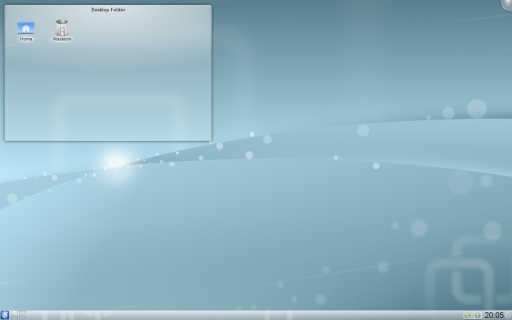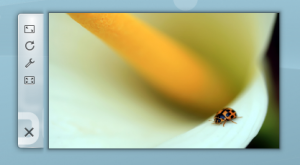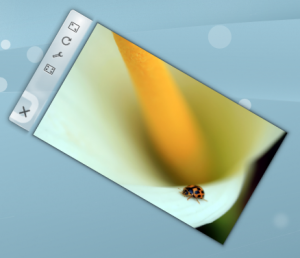Plasma: Difference between revisions
| Line 14: | Line 14: | ||
<!--T:7--> | <!--T:7--> | ||
The | The four key components of a default Plasma desktop are: | ||
<!--T:8--> | <!--T:8--> | ||
* '''The panel''', sometimes referred to as "the task bar", it provides room for the application launcher, the list of windows (programs), clock and system tray; | * '''The panel''', sometimes referred to as "the task bar", it provides room for the application launcher, the list of windows (programs), clock and system tray; | ||
* '''The desktop''', the area where widgets and icons reside; | * '''The desktop''', the area where widgets and icons reside; | ||
* '''The [[Plasma/FolderView|folder view]]''', a widget that lists the contenst of a folder on your computer, giving you quick access to basic file management tasks; | |||
* '''The Plasma toolbox''' This is located at the top right of the screen as well as at end of the panel. These are used to access configuration and other options quickly and reliably. | * '''The Plasma toolbox''' This is located at the top right of the screen as well as at end of the panel. These are used to access configuration and other options quickly and reliably. | ||
Revision as of 18:03, 9 August 2010
Template:I18n/Language Navigation Bar
At A Glance
A typical Plasma desktop looks like this:

The four key components of a default Plasma desktop are:
- The panel, sometimes referred to as "the task bar", it provides room for the application launcher, the list of windows (programs), clock and system tray;
- The desktop, the area where widgets and icons reside;
- The folder view, a widget that lists the contenst of a folder on your computer, giving you quick access to basic file management tasks;
- The Plasma toolbox This is located at the top right of the screen as well as at end of the panel. These are used to access configuration and other options quickly and reliably.
All of these default items are fully configurable and can host a wide variety of tools and content.
Finding your way around Plasma
You can use Plasma as you would use the desktop of any other operating system, by accessing the application menu (K Menu), viewing the currently active programs on the taskbar, accessing icons on the system tray, and so on.
An important part of Plasma are the so-called widgets. Widgets are the individual units of the desktop and they include (although they are not limited to) the application menu, icons, the system tray, the clock... Widgets can exist on the desktop itself, or be inserted in the panel. Panels and desktops are actually special kinds of widgets, meant to contain other widgets (in Plasma terms, they are called "Containments").
How does that relate with desktop usage? Plasma has also some new features with respect to traditional desktop usage. We have already mentioned the Plasma toolboxes, sometimes also called "cashews": those are the way to start interacting and customizing Plasma. By clicking on them, a menu will pop up on the screen with a variety of choices: from there you can add widgets to your panel or desktop, resize, add or remove panels, and other operations.
Desktop and icons
As you may notice from the screenshot, there are no icons placed directly on the desktop. Instead, they are placed inside a container, better known as Folder View. Although there are a number of technical reasons for doing so, the Folder View can perfectly act as a desktop replacement (in fact, it shows the Desktop folder by default). You can drag icons over it, cut, copy, paste, rename files and also create new folders/files.
The main differences from the usual Desktop folder are essentially two:
- You can have more than one Folder View on the desktop itself;
- You can set Folder View to show also different folders (both local and on the network).
Aside from the Folder View, you can put on the desktop all kinds of widgets, such as weather reporting widgets, notes widgets, file watchers... There are no limits on what you can customize.
Widgets everywhere
In KDE's version 4.x Plasma supports not only widgets written specifically for Plasma (also known as Plasmoids) but also ones from other sources such as Google Gadgets and Dashboard Widgets from Mac OSX. Additional widgets can easily be found and installed through Get Hot New Stuff.
Widgets that are docked into the panel usually have an Options menu, while those on the desktop have the configuration options within the 'handle', the shaded area which pops up, sometimes right or sometimes left of the widget. Clicking and holding the mouse on the blank part of the handle will allow you to drag the widget to the desired position.

You have four tools on this handle. The top one is the re-sizer. Click and hold on the tool and you can drag the size.
The second tool is a rotate tool. Again, click and hold the tool, while rotating to desired angle.

The third is the wrench or spanner which allows you to configure that particular widget's settings.
Finally, the forth tool is used on some widgets like the Picture Frame. If you use the Picture Frame widget for example, it will open the image viewer.
Some of our favourite widgets are discussed on the Plasma Widgets page
Start menus etc.
The Panel

Panels allow you to place widgets around the edges of the screen. These collections of widgets can be configured in various ways, including making them automatically hide when not in use or aligned to certain areas of the screen.
By default, there is one panel at the bottom of the screen, but you can add more panels, move and otherwise configure the default panel and remove panels you no long want. The widgets in all of the panels may also be adjusted to your liking.
For more information on configuring panels in Plasma Desktop and what they are capable of doing for you, visit the Plasma Panels page.
Activities
Use Cases
A user likes web comics so they add their favorite web comics via the comics widget. The user now has a full desktop activity dedicated to their favorite web comics. Now the user is happy with the web comics, but the user now has to go to work, so the user creates a activity with the folder view widgets set to the folders of the projects the user is currently working on. After work the user goes home and works on a side project of writing romance novels. The user always gains inspiration by looking at pictures of the user's significant other. The user now creates a new Activity but now puts pictures frame widgets with pictures of the user's significant other. The user also has a folder view of the romance novel project folder. Now no matter what the user is doing the user has a custom tailored activity to match it.
Go to this blog to read a few tips on using activities.
Widget Layouts and Virtual Desktops
Virtual desktops, the ability to have a separate sets of windows on separate desktops, can tie in with Activities. You can have a different activity on each virtual desktop. In Plasma Desktop 4.4, this can be configured by entering System Settings and navigating to Desktop -> Multiple Desktops, and checking "Different Activity for Each Desktop".
In Plasma Desktop 4.3, You configure this by zooming out and choosing "configure Plasma". Then select "use a different activity on each desktop" and zoom in again.
Hints and Tips
The Taskbar
Accessing the Taskbar Settings Menu: Click the panel toolbox (aka cashew), then right-click on the taskbar. From there you can access the Taskbar Settings dialog. The following settings are particularly useful:
- Grouping and Sorting: Grouping can be by program name, manually, or not at all. (You can also choose to only enable grouping if the taskbar is full.) Similarly, Sorting defaults to alphabetically, but it can also be by desktop, manually, or not sorted.
- Only Show Tasks from the Current Desktop: A checkbox on the Filters section.
- Have More than One Row on the Taskbar: If you use many applications at one time you may find it advantageous to set Maximum Rows and then Force Row Settings.
- Showing or Hiding Tooltips: A simple checkbox in the Appearance section of the General page.
Tweaking Plasma
- Learn how to add a sidebar with clock and news
- Customize your Plasma by mixing multiple Plasma themes
Further information
- The Plasma FAQ
- Plasma HowTo - short screencasts
- Glossary
- Some of our favourite plamoids - why not add yours?
- Here's how to install more Plasmas widgets
- Learn the versatility of KRunner
| Back to the Introduction page |

